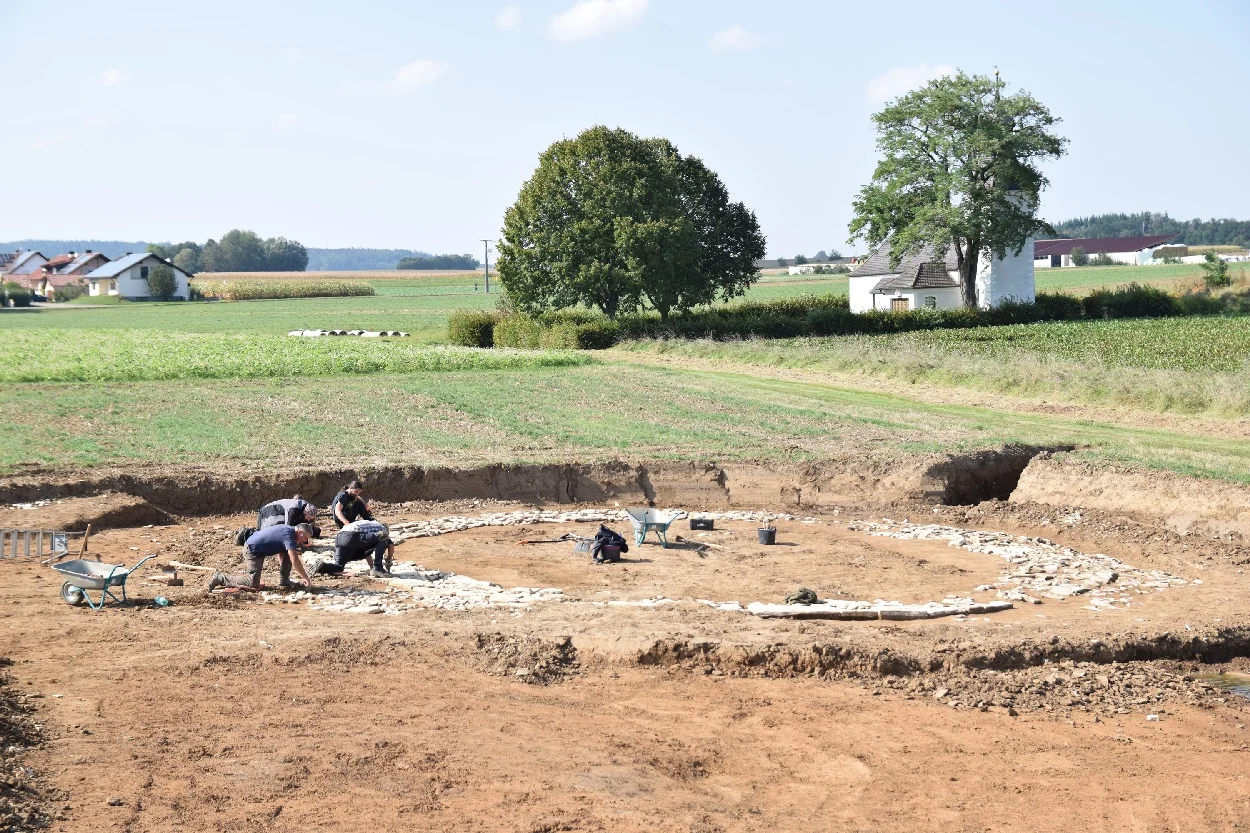Archaeologists from the Bavarian State Office for Monument Preservation (BLfD) have uncovered a monumental circular structure during construction works for a stormwater retention basin in the municipality of Nassenfels, Germany.
Measuring 12 metres in diameter, archaeologists have interpreted the structure to be the remains of a tumulus, a type of burial mound dating from the Roman period.
Although no human remains or grave goods were found during the excavation, it is likely that the monument served as a cenotaph, a symbolic tomb commemorating the deceased. This interpretation is supported with the discovery of an adjoining two-by-two-metre square base which may have once supported a stele or statue.
Situated on a major Roman road leading through Nassenfels into the Altmühl Valley, the monument is nearby a villa rustica, a farmhouse or villa set at the centre of a large agricultural estate.

“We didn’t expect to discover a funerary monument of this age and scale,” said Prof. Mathias Pfeil, General Conservator at the Bavarian State Office for Monument Preservation (BLfD). “Located along an important Roman road, this tumulus served both as a memorial and a statement of social prestige for the deceased’s family.”
Burial mounds were a longstanding tradition across the Roman world, inspired by Mediterranean and Central European customs. However, tumuli of this size and construction are exceptionally rare in what was the Roman province of Raetia, marking the discovery a rare find in understanding Roman life and funerary practices in Bavaria.
“In the northwestern provinces of the empire, tumuli appear from the 1st century AD onwards. In addition to newly constructed burial mounds, older Bronze or Iron Age structures were also used for secondary burials. Research is debating whether this also indicates a conscious reversion to pre-Roman, particularly Celtic, burial customs,” said the BLfD.
Header Image Credit : Dr. Woidich GmbH

